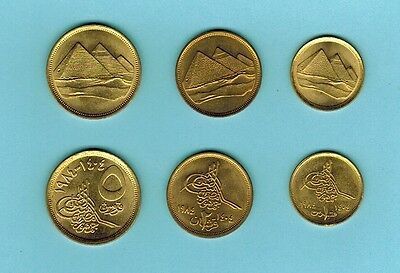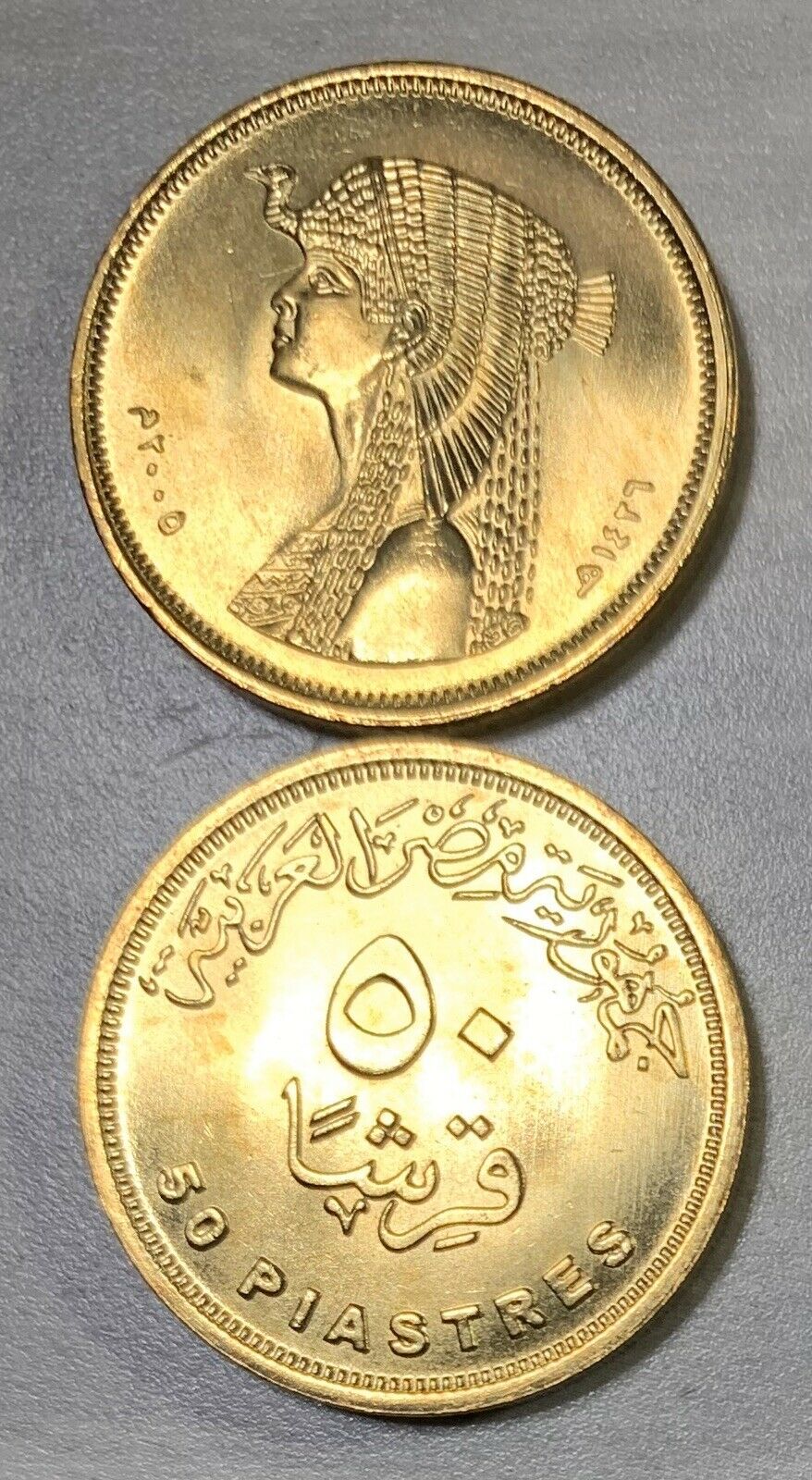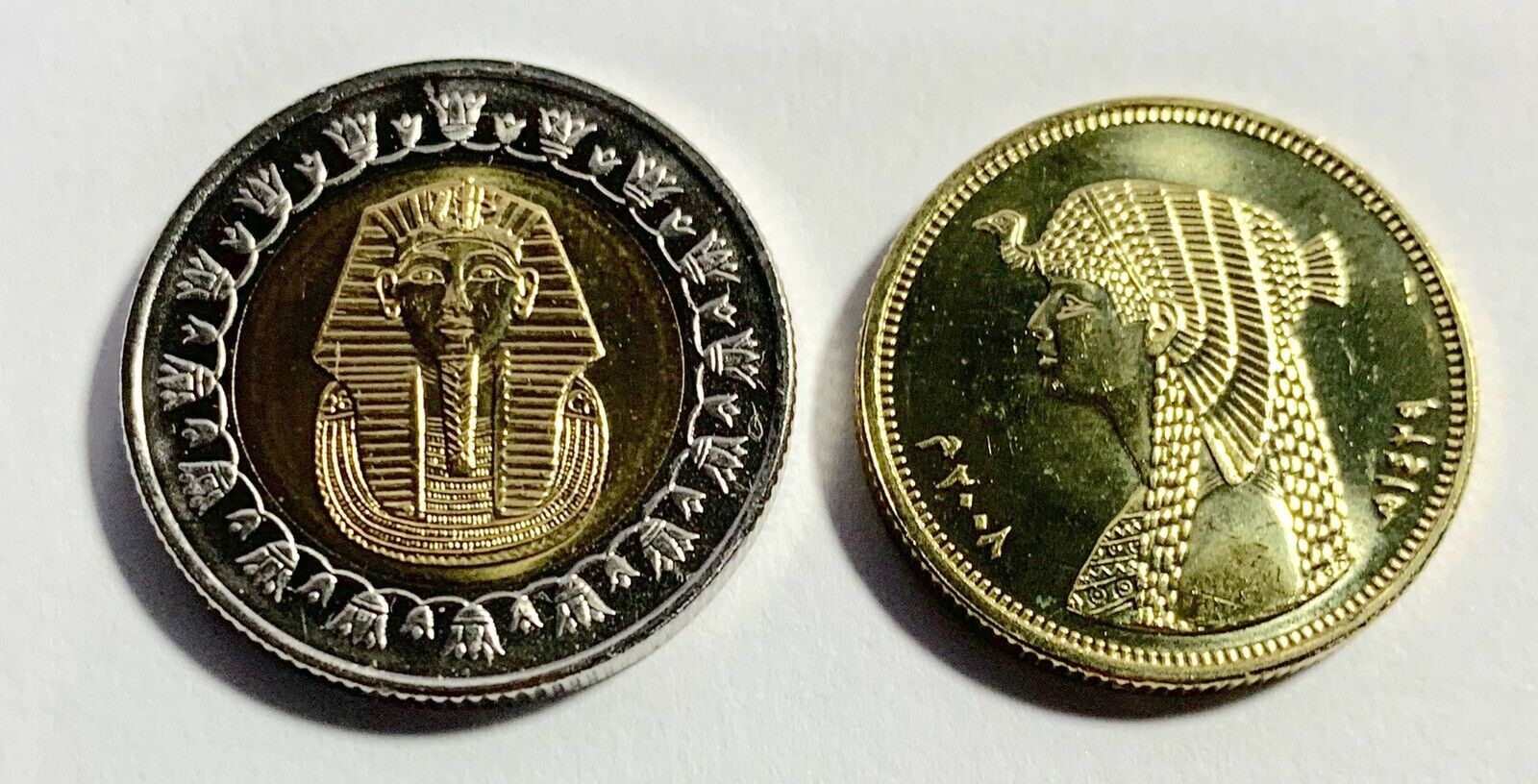-40%
LOT of TWO (2) Large Silver Egypt 1 Pound Coins 1970-1972
$ 9.76
- Description
- Size Guide
Description
Your are Bidding onTWO (2)
large Silver 1 Pound Coins from
Egypt
One is Depicting Former
President Nasser,
and the other coin shows the famous
Al Azar Mosque
1st coin - EGYPT REPUBLIC 1970 KM # 425 1 POUND PRESIDENT NASSER .72 FINE SILVER
2nd coin - EGYPT 1 POUND 1970-72 KM# 424 COIN .720 FINE SILVER 40mm Al Azhar Mosque
KM #425
SPECIFICATIONS
Composition:
Silver
Fineness:
0.7200
Weight:
25.0000g
ASW:
0.5787oz
Melt Value:
.71 (1/27/2023)
Diameter:
40mm
DESIGN
Obverse:
Head of President Nasser right
Reverse:
Denomination divides dates, legend above
NOTES
Subject:
President Nasser
KM # 424
SPECIFICATIONS
Composition:
Silver
Fineness:
0.7200
Weight:
25.0000g
ASW:
0.5787oz
Melt Value:
.71 (1/27/2023)
Diameter:
40mm
DESIGN
Obverse:
Center circle divides dates
Reverse:
Al Azhar Mosque
NOTES
Subject:
1000th Anniversary - Al Azhar Mosque
I bought these
TWO
coins over 10 years ago from a very reputable coin dealer (
London Coin Gallery
in Newport Beach, CA )
I am not a full time
Ebay
seller, but I have been selling some of my coin collection on and off on
Ebay
for over
15 years.
.
Guaranteed authentic.
Shipping:
FREE
Shipping
within the US
Returns:
14 day returns
|
Buyer pays for return shipping
International Shipping available to most countries. ( Cost will vary)
Al-Azhar Mosque
(
Arabic
:
الجامع الأزهر
,
romanized
:
al-Jāmiʿ al-ʾAzhar
,
lit.
'The Resplendent Congregational Mosque',
Egyptian Arabic
:
جامع الأزهر
,
romanized:
Gāmiʿ el-ʾazhar
), known in Egypt simply as
al-Azhar
, is a
mosque
in
Cairo, Egypt
in the
historic Islamic core of the city
. Commissioned by
Jawhar al-Siqilli
shortly after Cairo was established as the new capital of the
Fatimid Caliphate
in 970, it was the first mosque established in a city that eventually earned the nickname "the City of a Thousand
Minarets
".
[b]
Its name is usually thought to derive from
az-Zahrāʾ
(meaning "the shining one"), a title given to
Fatimah
, the daughter of
Muhammad
.
After its dedication in 972, and with the hiring by mosque authorities of 35
scholars
in 989, the mosque slowly developed into what is today the second oldest continuously run university in the world after
Al-Qarawiyyin
in
Idrisid
Fes
.
Al-Azhar University
has long been regarded as the foremost institution in the Islamic world for the study of Sunni
theology
and
sharia
, or Islamic law. The university, integrated within the mosque as part of a
mosque school
since its inception, was nationalized and officially designated an independent university in 1961,
Al-Azhar Al Sharif
, following the
Egyptian Revolution of 1952
.
Over the course of its over a millennium-long history, the mosque has been alternately neglected and highly regarded. Because it was founded as a
Shiite Ismaili
institution,
Saladin
and the
Sunni
Ayyubid dynasty that he founded shunned al-Azhar, removing its status as a congregational mosque and denying
stipends
to students and teachers at its school. These moves were reversed under the
Mamluk Sultanate
, under whose rule numerous expansions and renovations took place. Later rulers of Egypt showed differing degrees of deference to the mosque and provided widely varying levels of financial assistance, both to the school and to the upkeep of the mosque. Today, al-Azhar remains a deeply influential institution in Egyptian society that is
highly revered
in the Sunni
Muslim world
and a symbol of Islamic Egypt.
Gamal Abdel Nasser
Gamal Abdel Nasser Hussein
[a]
(15 January 1918 – 28 September 1970) was an Egyptian politician who served as the second
president of Egypt
from 1954 until his death in 1970. Nasser led the
Egyptian revolution of 1952
and introduced
far-reaching land reforms
the following year. Following a 1954 attempt on his life by a
Muslim Brotherhood
member, he cracked down on the organization, put President
Mohamed Naguib
under
house arrest
and assumed executive office. He was
formally elected president
in June 1956.
Nasser's popularity in Egypt and the
Arab world
skyrocketed after his
nationalization
of the
Suez Canal Company
and his political victory in the subsequent
Suez Crisis
, known in Egypt as the
Tripartite Aggression
. Calls for
pan-Arab unity
under his leadership increased, culminating with the formation of the
United Arab Republic
with
Syria
from 1958 to 1961. In 1962, Nasser began a series of major
socialist
measures and modernization reforms in Egypt. Despite setbacks to his
pan-Arabist
cause, by 1963 Nasser's supporters gained power in several Arab countries, but he became embroiled in the
North Yemen Civil War
, and eventually the much larger
Arab Cold War
. He began his second presidential term
in March 1965
after his political opponents were banned from running. Following Egypt's defeat by
Israel
in the
Six-Day War
of 1967, Nasser resigned, but he returned to office after popular demonstrations called for his reinstatement. By 1968, Nasser had appointed himself Prime Minister, launched the
War of Attrition
to regain the
Israeli-occupied Sinai Peninsula
, began a process of depoliticizing the military, and issued a set of political liberalization reforms. After the conclusion of the
1970 Arab League summit
, Nasser suffered a heart attack and died. His funeral in
Cairo
drew five to six million mourners,
[4]
and prompted an outpouring of grief across the Arab world.
Nasser remains an iconic figure in the Arab world, particularly for his strides towards
social justice
and Arab unity, his modernization policies, and his
anti-imperialist
efforts.

















